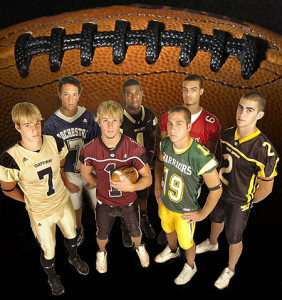November 9th, 2010
Concussion in Sports: A New Ballgame
Greg Bratton, MD
 The September issue of Journal Watch General Medicine included an article from the American Academy of Pediatrics about new criteria for diagnosis and management of concussions in children and adolescents. Shortly after this issue was published, a segment aired on ESPN regarding a confrontation between the head football coach at Texas Christian University and its team physician over holding a player out of the game due to a concussion.
The September issue of Journal Watch General Medicine included an article from the American Academy of Pediatrics about new criteria for diagnosis and management of concussions in children and adolescents. Shortly after this issue was published, a segment aired on ESPN regarding a confrontation between the head football coach at Texas Christian University and its team physician over holding a player out of the game due to a concussion.
As a sports medicine enthusiast and team physician to a local high school, both news reports hit close to home for me. I have long believed that concussions have never received the special consideration that they deserved. In my own athletic career, I have been a part of several incidents where I or a teammate had symptoms that would qualify a as a concussion and was either too afraid to tell the coach or was instructed to “play hurt.” Even now, standing on the sidelines on Friday night, I all too often hear coaches tell players to “shake it off” and to “get back in the game.” And, unfortunately, despite the literature and mounting evidence that concussions are serious business , coaches are not jumping on the “better safe than sorry” bandwagon. So, when the TCU team physician was seen being berated by the head coach, I was empathetic. The progressing culture change in dealing with concussions in sport needs to start being embraced. In medicine, we tell patients that chest pain is a warning sign of heart attacks and that TIAs are warning signs for stroke. But no one tells athletes and coaches that concussions are warning signs for brain damage.

In April of 2010, Owen Thomas, captain of the University of Pennsylvania football team committed suicide by hanging himself. Owen had no documented concussions, but, when his brain was studied by Boston University, he had evidence of early chronic traumatic encephalopathy (CTE). CTE, also called dementia pugilistica, is a result of repeated blows to the head. Its effects are primarily neurobehavioral and can involve “poor decision-making, impaired memory, erratic behavior, use of drugs and alcohol, depression and suicide.” It is brain damage, and it raises a question: If you can develop this condition without an obvious concussion, what is going on in the brains of those with repetitive concussions? Boston University and the Center for the Study of Traumatic Encephalopathy are trying to answer that question by enlisting NFL players to donate their brains postmortem, but, as of now, we can only speculate.
Clearly, when coaches allow kids to participate in contact sports after a blow to the head, they are effectively risking their futures. We need to eradicate the mentality that a player is weak when they are injured and begin supporting making the right decision for that player’s health. Comments like TCU head coach Gary Patterson’s, “As far as I’m concerned [he] was fine 10 minutes after he was hurt,” need to be a thing of the past.
Some states — Texas, Washington, and Oregon — have proactively passed laws about managing concussions, and a national push is on for others to follow suit . In fact, Congress currently is trying to pass legislation that will further protect U.S. student athletes. The Protecting Student Athletes from Concussions Act would make acute management of concussions easier by mandating school districts have concussion management plans in place; students, parents and school personnel would be educated about concussions; and the tug-of-war between a coach’s competitive drive and a player’s best interest would be nullified.
If Congress’s actions and the recent article in Pediatrics aren’t proof enough, the governing body on “all things neurological,” the American Academy of Neurology, has issued its own position statement on concussion and its management. The tide is beginning to turn. And eventually, it will be an exception that an athlete returns to the field of play after a significant blow to the head. We all just need to start listening to the evidence — and following it. One day, our college athlete-students will once again be called student-athletes. Mind will once triumph over matter (and money). I, for one, will welcome this day. A sports concussion assessment is available to help with medical evaluation of a player who has received a blow to the head.


It seems to me that the culture shift Dr. Bratton desires will most likely resemble a grass roots effort. Physicians and trainers dedicated to the health of their athletes, particularly at the high school level, stand to make the greatest impact. Changing the expectations of parents and student-athletes before they reach higher levels of competition (with greater levels of both peer and coaching pressure) should help curb dangerous practices regarding return to play.
Kuddos on a well written blog, Dr. Bratton.
Thanks a lot